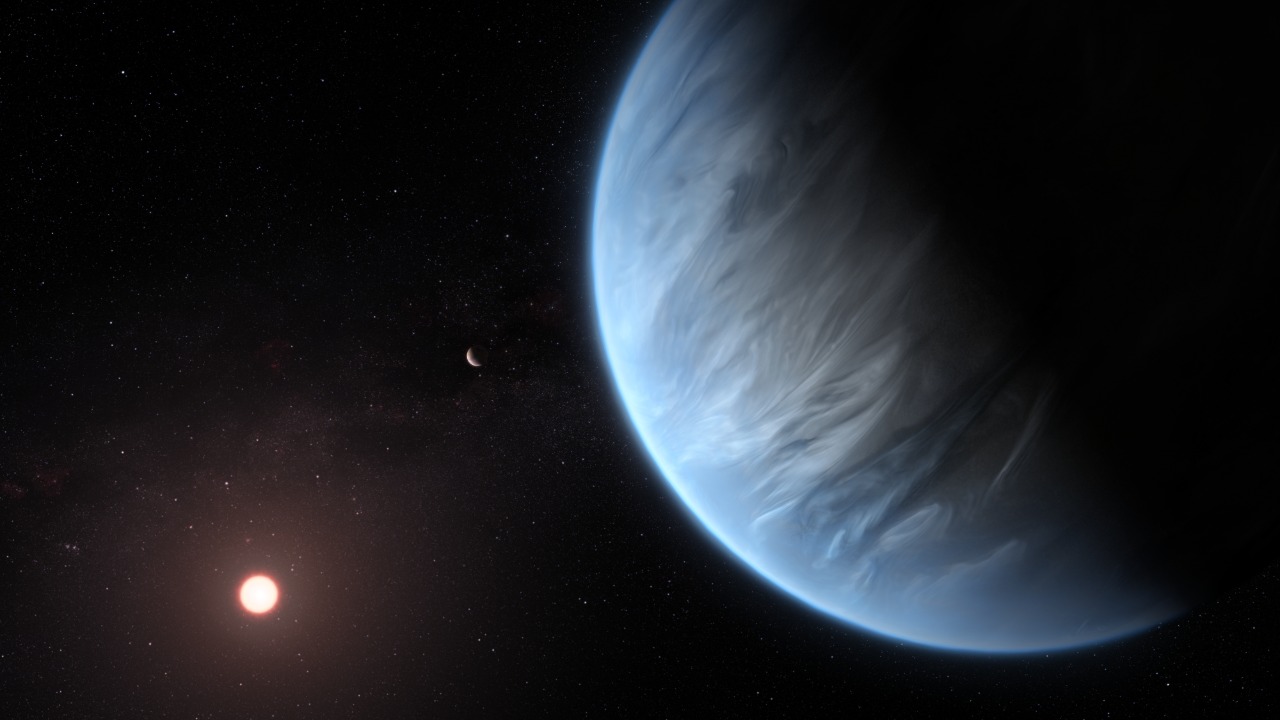
Scientists have recently discovered water vapor in the atmosphere of K2-18b, a distant super-Earth located beyond our solar system. This finding, facilitated by advanced astronomical techniques, marks a significant milestone in the search for potentially habitable worlds. As researchers continue to study this exoplanet, the presence of water vapor sparks exciting possibilities for the existence of life beyond Earth.
The Discovery of K2-18b
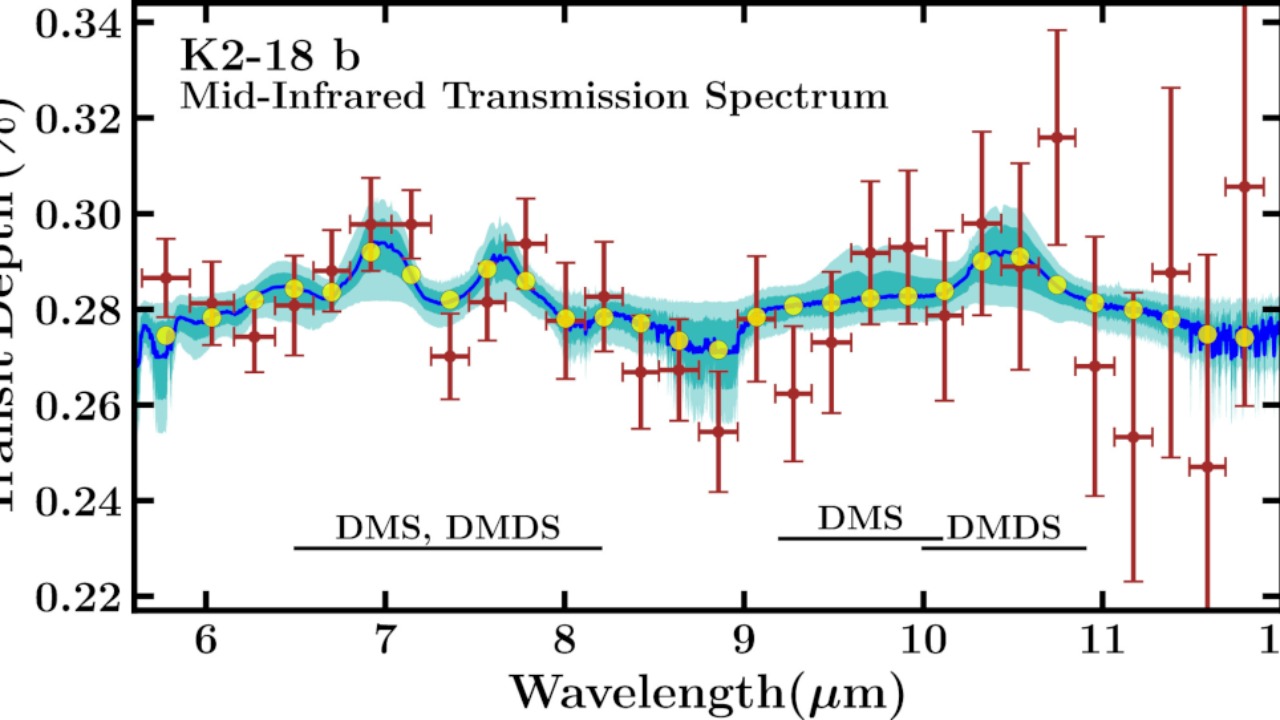
K2-18b was first identified during a survey by the Kepler Space Telescope, which has been instrumental in the discovery of numerous exoplanets. Classified as a super-Earth, K2-18b is larger than Earth but smaller than ice giants like Neptune. Its initial discovery was a key milestone in exoplanet research, shedding light on the diversity of planets beyond our solar system. Super-Earths are particularly intriguing because their size suggests they could have rocky surfaces and potentially support life.
Advanced telescopes, such as NASA’s Hubble Space Telescope, have played a crucial role in detecting distant exoplanets like K2-18b. These telescopes use techniques such as transit photometry, where the dimming of a star is observed as a planet passes in front of it. This method allows astronomers to infer the presence of a planet and gather data about its size and orbit. The location of K2-18b within its star’s habitable zone adds to the excitement, as this zone is where conditions might be right for liquid water to exist.
Analyzing the Atmosphere of K2-18b
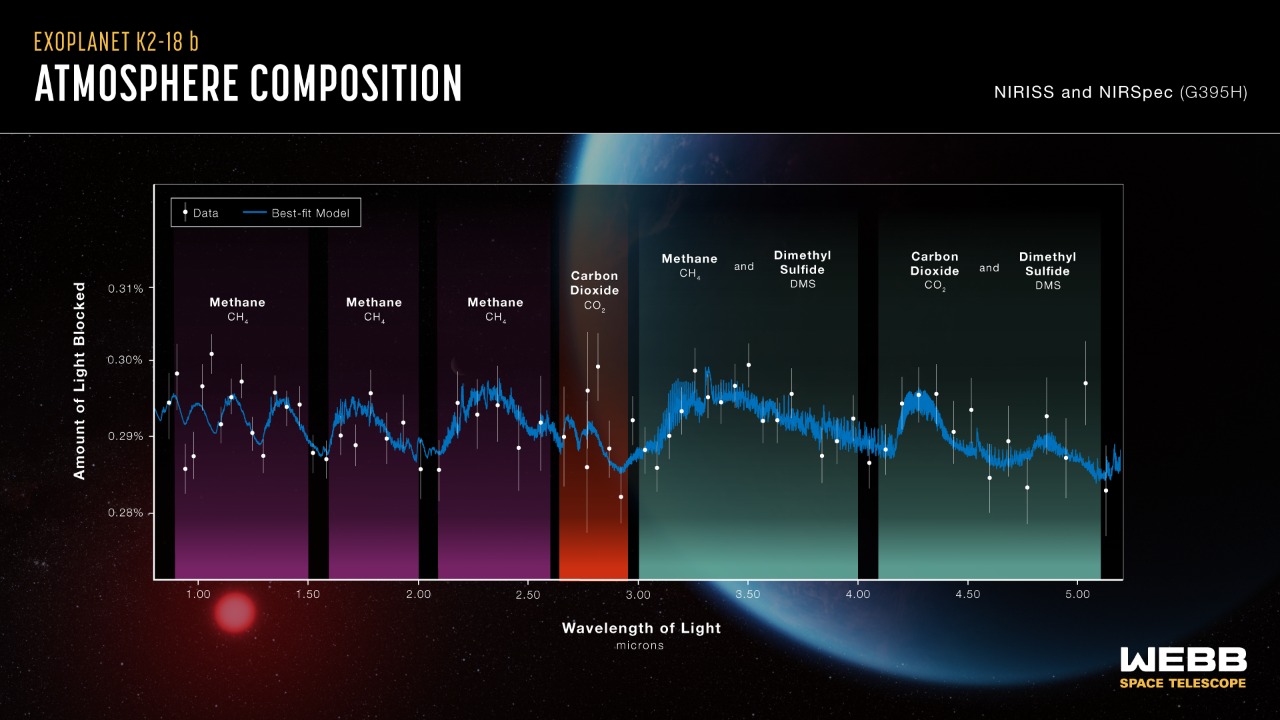
To detect water vapor in the atmosphere of K2-18b, scientists used spectroscopy, a technique that analyzes the light spectrum emitted or absorbed by an object. As starlight passes through the planet’s atmosphere, certain wavelengths are absorbed by gases, revealing their presence. This method allowed researchers to identify water vapor, a significant discovery considering water is a key ingredient for life.
Comparing K2-18b’s atmospheric composition to Earth’s reveals intriguing similarities and differences. While both planets have water vapor, the concentrations and other atmospheric components differ. For instance, K2-18b may have a hydrogen-rich atmosphere, unlike Earth’s nitrogen-oxygen mix. The challenge lies in studying these distant atmospheres, as factors like stellar activity and the planet’s own atmospheric dynamics can complicate observations. Despite these challenges, the discovery of water vapor is a promising step toward understanding the potential habitability of exoplanets.
Implications for Astrobiology and Habitability
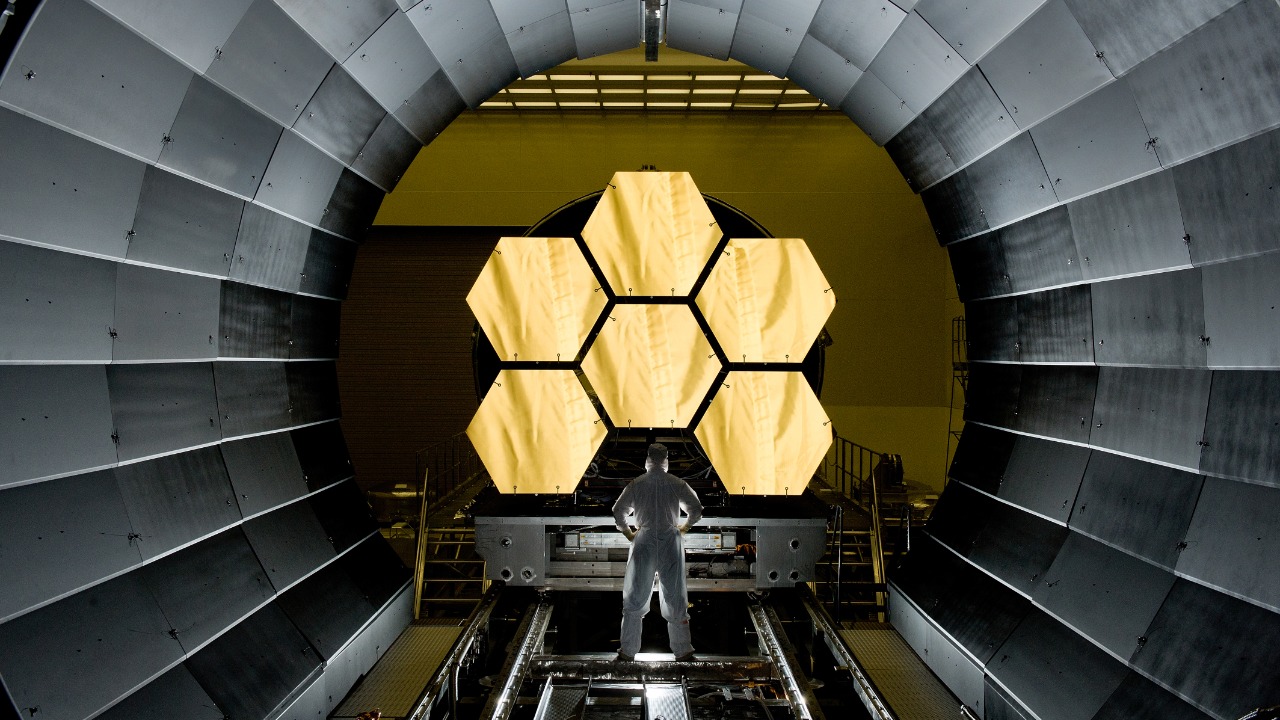
The presence of water vapor on K2-18b raises the possibility of life as we know it existing on this distant world. In astrobiology, water is often considered a cornerstone of habitability due to its role as a solvent that facilitates chemical reactions necessary for life. The discovery on K2-18b thus suggests the planet might have the conditions necessary to support some form of life, though this remains speculative without further evidence.
Finding water vapor is significant because it serves as a vital indicator of habitability. While it does not guarantee life, it increases the likelihood that life could exist. Future missions, such as the James Webb Space Telescope, aim to further explore exoplanets like K2-18b and gather more detailed information about their atmospheres and surface conditions. Such missions are crucial in determining whether these distant worlds could indeed host life.
Technological Advances in Exoplanet Research
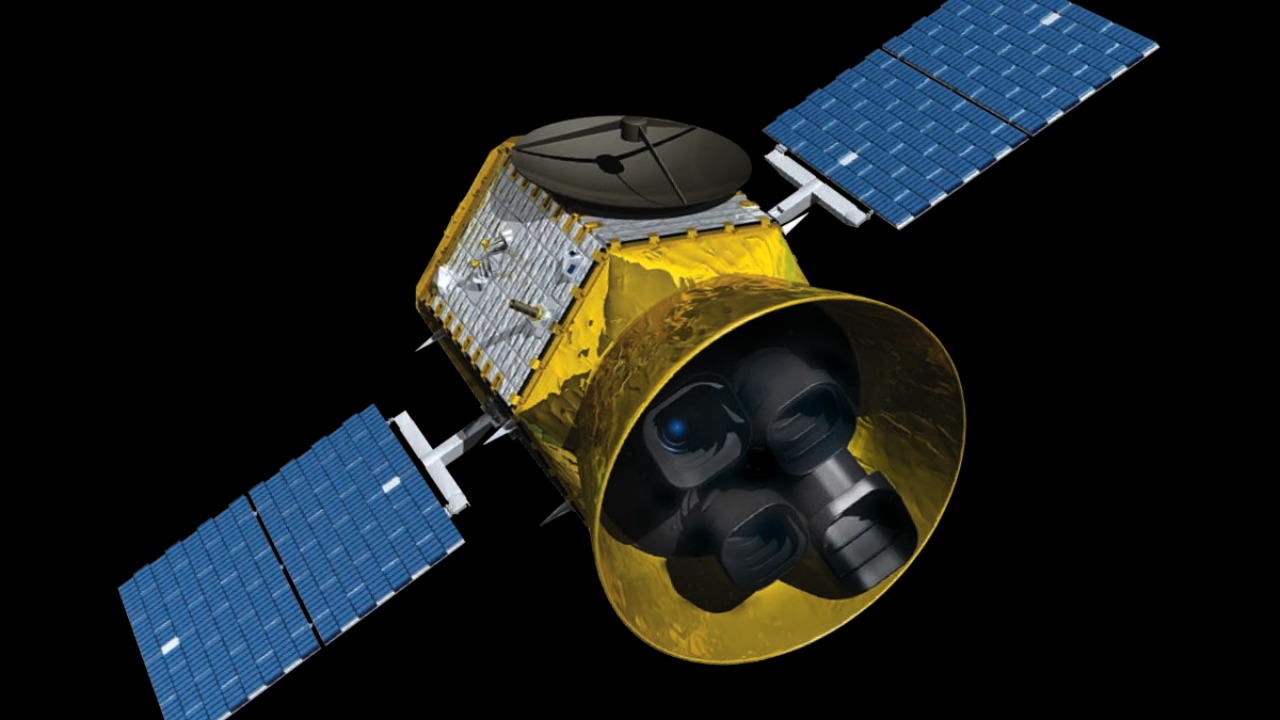
Recent advancements in telescope technology have significantly impacted the discovery of exoplanets. Instruments like the Transiting Exoplanet Survey Satellite (TESS) and upcoming missions such as the European Space Agency’s PLATO are expected to expand our knowledge of worlds beyond our solar system. These technologies allow for more precise observations and the ability to detect smaller planets in habitable zones.
Space agencies worldwide, including NASA and the European Space Agency (ESA), have been collaborating to push the boundaries of exoplanet research. These collaborations have led to breakthroughs in understanding how planets form and evolve. With these advancements, the ongoing quest to find Earth-like planets continues to gain momentum. Predictions for future discoveries suggest that we may find more planets with conditions suitable for life, further fueling the search for extraterrestrial life.
The Bigger Picture: Searching for Life Beyond Earth
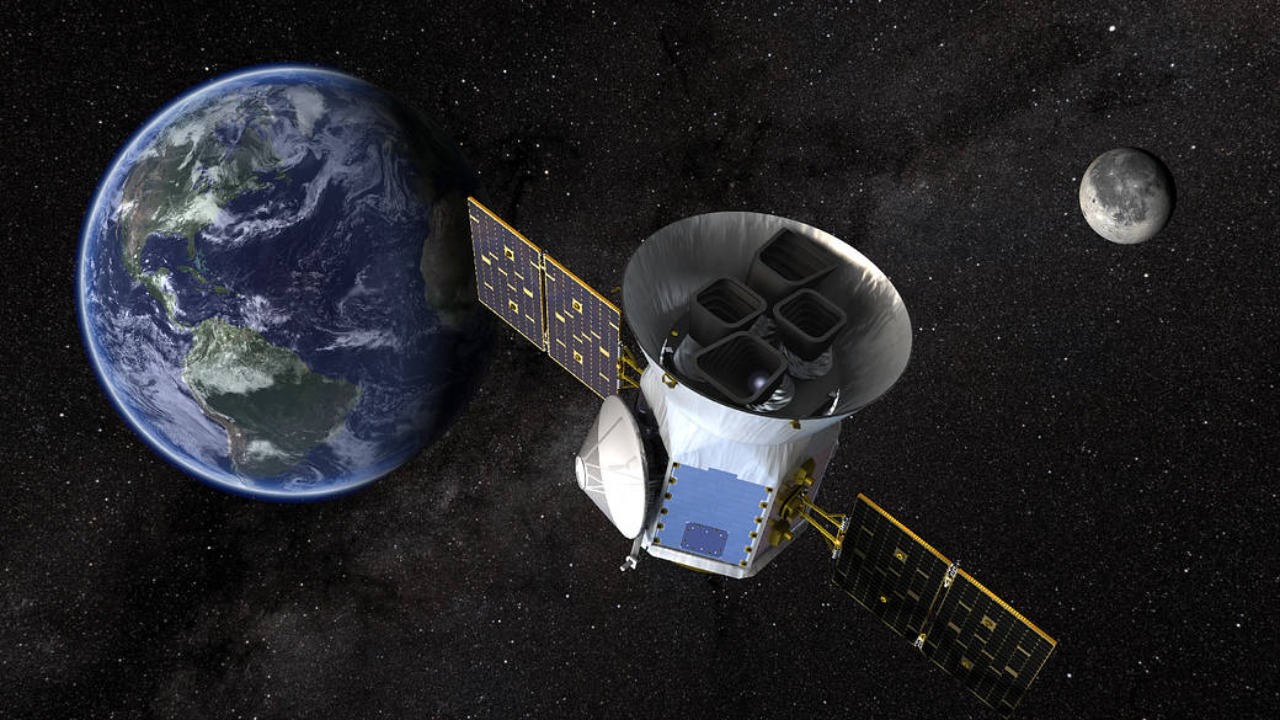
Studying exoplanets like K2-18b is crucial in the broader context of space exploration. These discoveries not only increase our understanding of the universe but also address profound questions about our place in it. The search for extraterrestrial life challenges us to reconsider our understanding of life and its potential diversity across the cosmos.
There are ethical and philosophical considerations in the search for life beyond Earth. Discovering life elsewhere would have profound implications for science, religion, and philosophy. It would challenge our understanding of biology and potentially redefine our concept of life. Discoveries like water vapor on K2-18b inspire public interest and scientific inquiry, opening up new avenues for exploration and understanding. As we continue to explore the universe, the potential for finding life beyond Earth remains one of the most exciting prospects of modern science.